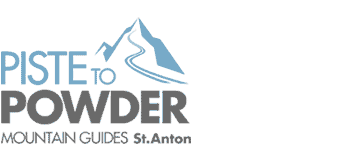OFF PISTE SKIING – ABS avalanche airbags?
Over the last few years the popularity of airbags has spread rapidly amongst recreational off-piste skiers and boarders. Their main safety aspect is that when deployed, they are effective at maintaining the skier in the top level of the avalanche, so preventing you from being buried and significantly improving your chance of survival, theoretically.
Practically spoken the whole topic isn’t that simple:
Read statistics carefully:
You may see branded “A 97 percent success rate in real world conditions.” However this data may be measured from small avalanches where you have a good chance of survival. Respected Canadian researcher, Pascal Haegeli compared survival in multiple burials where some had bags and some didn’t. He only looked at incidents where people “were seriously involved”. His conclusions showed that deploying an airbag saved about half of those who would have otherwise died. Other studies have shown this to be around 64% on average. Don’t forget that avalanches vary in size and snow conditions, the terrain is essential how an avalanche builds up. So survival chance definitively won’t be 97 percent! But if you think about it even saving half of avalanche fatalities is still a good enough reason to look at purchasing or renting one.
Are you risking more when skiing with an ABS system?
We’re human beings – always keep that in mind! If you start thinking with your new ABS airbag system you can now ski all sorts of steep terrain on any given day – better don’t get one!
Don’t forget other important avalanche emergency equipment
First of all get your basic equipment which is a digital 3 antenna transceiver, a shovel and a probe. Also here, keep training! In case of an emergency you have to know how to use it. Our guiding lessons include free safety equipment and we make sure that you understand how to use it and we’ll train you proberly! Don’t forget your first aid kit and some other helpful stuff. If you’d like to put your stuff in an lightweight ski backbag consider also this option here!
Training & maintainance
Training is essential! Key to safety is actually triggering the bag in time – as it can take 1-2 seconds to inflate. This should be done at the first sign of an avalanche, not when it hits you, when it is most likely too late. Alarmingly the non-trigger rate in studies of mortalities show it is higher than 20%.
Make sure you test it each season – ideally at the start. You can do this in any ski shop and then purchase a replacement cannister. The handle can be removed – and this should be done after each use and prior to apres (Mammut has a neat zip to tuck it away). You should also periodically lubricate the trigger installation mechanism – any lube will do but if in doubt ask in a ski shop.
Trust the pro’s
Do you know the terrain you’re skiing? Have you checked weather and avalanche bulletin information? What are the snow conditions to be like? Those are only a few questions out of many which have to be asked before entering the off piste to have a fun but also safe day out.
We’re all qualified UIAGM mountain guides which is the highest education in terms of snow and mountain knowledge worldwide! Our aim is to take you to the best snow and terrain on any given day and help you to push your limits and develop your backcountry skills while making sure that you enjoy maximum safety at all times. We’re choosing the terrain according to the group and know the conditions! Our guides work closely together all day long and our daily morning meetings guarantee we find you the best powder lines without compromising safety.
ABS Buyer’s guide
If you’ve got your basic avalanche equipment sorted and would like to get an ABS airbag, here’s some helpful tips:
First consideration is the shape of safety bag:
How big does your ski big have to be? If you need it only for off piste skiing close to the ski area a smaller one (e.g. 20 liters) will do, if you’d like to go skitouring also, get a bigger one (e.g. 30 liters).
Weight considerations:
Each year bags become lighter (and cheaper). ABS uses a vario system so you can change the size of your bag – for touring for example, compared to day skiing you may want a larger bag. Get a carbon cartridge to make it lighter, available in Jennewein sports shop. Mamut with its RAS system allows you to use the backbag also as normal bag, e.g. if you’d like to have a summer daypack.
Differents systems on the market:
The ABS system which has now been around for 30 years, uses a removable activation handle which when pulled inflates dual bags which come out either side like a pair of angel wings. Others such as snowpulse – now bought out by Mammut will wrap around you, theoretically protecting your head and neck against trauma. The downside of the Mammut is once deployed you could lose some vision and range of motion. Mammut now also offers two different airbag shapes/systems (RAS and PAS). RAS removable airbag system is designed to use in different size bags (much like the ABS vario). PAS protective airbag system is the one that wraps around your head ostensibly to protect against trauma.
Note that many brands such as North Face, Osprey, Ortovox and Dakine, all use the ABS system in their packs, – so if you like a bag just check the system used before you decide.
Another thing to bear in mind is the detonator used. ABS uses explosives to trigger the airbag while the Mammut and snowpulse system uses compressed air and a cable trigger making it easier to travel. However if you notify airlines in advance and remove the cannister you should not have a problem with the ABS.
Interesting is also the system of Black Diamond, called Jet Force which will continue to self inflate even after puncturing , the downside is the weight at the moment.
Ortovox is releasing a new system 2016/17 focussing on the weight issue!
If you’re unsure which system is best for you, rent an ABS at Jennewein and try different systems before buying one!














